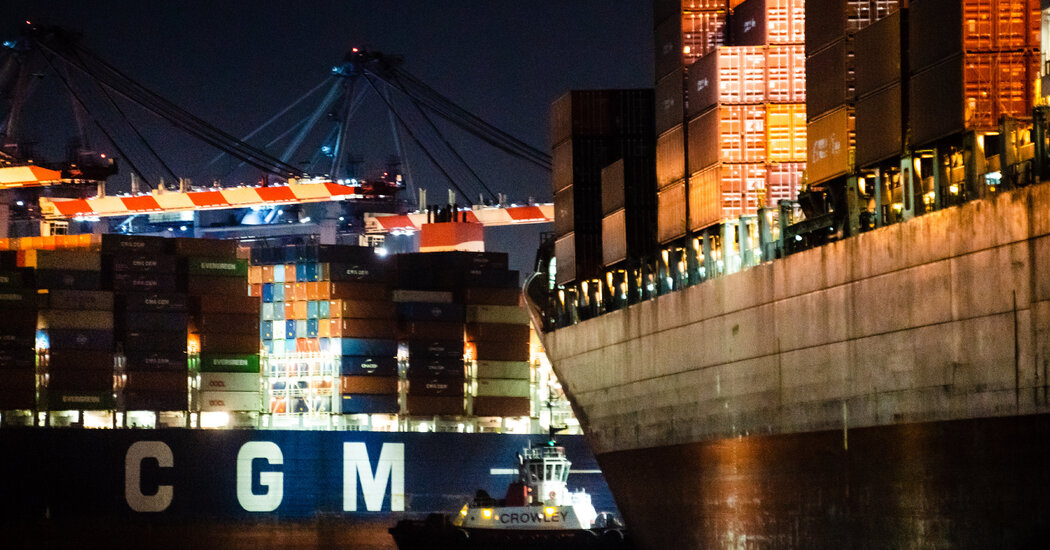
The steep surge in demand clogged the system for transporting goods to the factories that needed them. At the same time, finished products — many of them made in China — piled up in warehouses and at ports throughout Asia because of a profound shortage of shipping containers, the standard-size steel boxes that carry goods on enormous vessels.
What happened to all the giant container ships?
In simplest terms, they got stuck in the wrong places. In the first phase of the pandemic, as China shipped huge volumes of protective gear like masks and hospital gowns all over the world, containers were unloaded in places that generally do not send much product back to China — regions like West Africa and South Asia. In those places, empty containers piled up just as Chinese factories were producing a mighty surge of other goods destined for wealthy markets in North America and Europe.
Because containers were scarce and demand for shipping intense, the cost of moving cargo skyrocketed. Before the pandemic, sending a container from Shanghai to Los Angeles cost perhaps $2,000. By early 2021, the same journey was fetching as much as $25,000. And many containers were getting bumped off ships and forced to wait, adding to delays throughout the supply chain. Even huge companies like Target and Home Depot had to wait for weeks and even months to get their finished factory wares onto ships.
Meanwhile, at ports in North America and Europe, where containers were arriving, the heavy influx of ships overwhelmed the availability of docks. At ports like Los Angeles and Oakland, Calif., dozens of ships were forced to anchor out in the ocean for days before they could load and unload. At the same time, truck drivers and dockworkers were stuck in quarantine, reducing the availability of people to unload goods and further slowing the process. This situation was worsened by the shutdown of the Suez Canal after a giant container ship got stuck there, and then by the closings of major ports in China in response to new Covid-19 cases.
Understand the Supply Chain Crisis
Many companies responded to initial shortages by ordering extra items, adding to the strains on the ports and filling up warehouses. With warehouses full, containers — suddenly serving as storage areas — piled up at ports. The result was the mother of all traffic jams.
What exactly is in short supply?
Just about anything that is produced or manufactured — from chemicals to electronics to running shoes. Shortages beget more shortages. A paint manufacturer that needs 27 chemicals to make its products may be able to buy all but one, but that one — perhaps stuck on a container ship off Southern California — may be enough to halt production.
Why are new cars so hard to find?
Cars use computer chips — lots of them — and the shortages of chips have made it more difficult to produce vehicles. In turn, that has made it harder and more expensive to buy cars.



